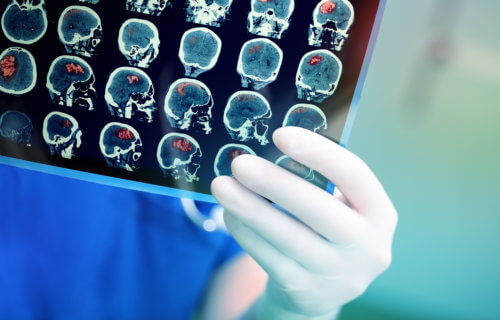HOUSTON — Injecting bone marrow into the brain could help stroke victims recover, suggests a new study.
Results of a clinical trial provide evidence that treating severe stroke patients with an injection of bone marrow cells may lead to a reduction in brain injury. The breakthrough could help reduce the impact from severe strokes, which often impair the movement of one side of the body.
The study, published in the journal Stem Cells Translational Medicine, was conducted by experts from the Institute for Stroke and Cerebrovascular Disease at The University of Texas Health Science Center in the United States.
“Nearly 90 percent of patients who suffer an ischemic stroke – the most common type of stroke – exhibit weakness or paralysis to one side of the body,” says Dr. Muhammad Haque in a statement. “Injuries to the corticospinal tract (CST), which is the main white matter connection in the brain responsible for carrying movement-related information to the spinal cord, is the primary cause of this motor function impairment. In stroke animal models, we’ve seen how bone marrow mononuclear cells, BM-MNC, attenuate secondary degeneration and enhance recovery, including white matter tract remodeling. That led us to our current study.”
Previously Haque and Dr. Sean I. Savitz had conducted a clinical trial on the safety and feasibility of intravenous administration of a patient’s own bone marrow-derived mononuclear cells in patients with ischemic stroke. In that study, they reported preliminary CST recovery in the part of the brainstem called the rostral pons.
In their current work, they delved deeper into the finding by using 3D anatomical and DTI images obtained from MRI scans.
The 37 patients in the study ranged in age from 18 to 80. While all received the standard stroke treatment and rehab, 17 patients whose strokes were the most severe received the additional BM-MNC injections. Three months later, MRI scans of each patient showed, as the researchers expected, a decrease in the integrity of their CST.
But scans taken 12 months after the stroke occurred showed an improvement in the CST of the 17 patients who received injections.
“These results suggest the possibility of microstructural stabilisation in the cell-injected group as compared with the non-treated patients,” adds Haque. “We envision that future clinical trials might be directed toward identifying white matter protection or repair as an important mechanistic target of efficacy studies and potency assays for bone marrow cell therapies.”
Experts believe the treatment could be a groundbreaking contribution to modern medicine for stroke patients.
“These clinical trial results are certainly encouraging and demonstrate the need to further pursue the use of cell-based regenerative therapies,” says Dr. Anthony Atala, editor-in-Chief of Stem Cells Translational Medicine and director of the Wake Forest Institute for Regenerative Medicine. “These outcomes suggest a potential approach that could change the brain health for millions of patients who suffer a stroke.”
Report by SWNS writer Stephen Beech.
